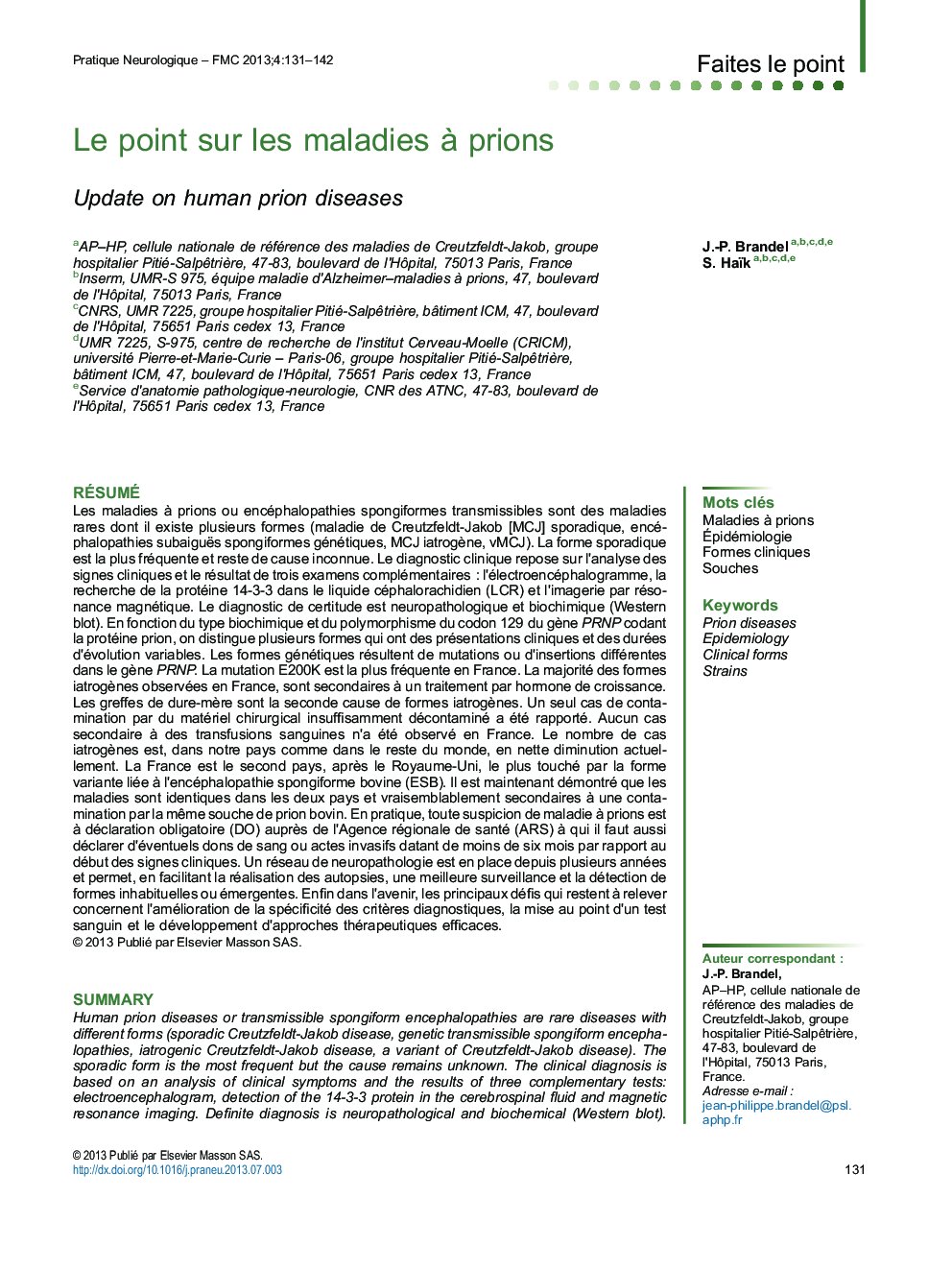| کد مقاله | کد نشریه | سال انتشار | مقاله انگلیسی | نسخه تمام متن |
|---|---|---|---|---|
| 3087077 | 1190055 | 2013 | 12 صفحه PDF | دانلود رایگان |
عنوان انگلیسی مقاله ISI
Le point sur les maladies à prions
دانلود مقاله + سفارش ترجمه
دانلود مقاله ISI انگلیسی
رایگان برای ایرانیان
کلمات کلیدی
موضوعات مرتبط
علوم زیستی و بیوفناوری
علم عصب شناسی
عصب شناسی
پیش نمایش صفحه اول مقاله

چکیده انگلیسی
Human prion diseases or transmissible spongiform encephalopathies are rare diseases with different forms (sporadic Creutzfeldt-Jakob disease, genetic transmissible spongiform encephalopathies, iatrogenic Creutzfeldt-Jakob disease, a variant of Creutzfeldt-Jakob disease). The sporadic form is the most frequent but the cause remains unknown. The clinical diagnosis is based on an analysis of clinical symptoms and the results of three complementary tests: electroencephalogram, detection of the 14-3-3 protein in the cerebrospinal fluid and magnetic resonance imaging. Definite diagnosis is neuropathological and biochemical (Western blot). According to the biochemical typing and to the polymorphism of the 129 codon of the PRNP gene encoding the prion protein, several forms are distinguished with various clinical presentations and disease durations. Genetic forms are the result of different mutations or insertions in the PRNP gene. In France, the E200K mutation is the most common. Most iatrogenic cases, in France, are related to treatment with growth hormone. Dura mater grafts are the second cause. Only one case of contamination via an insufficiently decontaminated surgical device has been reported. In France, no case related to blood transfusion has been observed. In France, as worldwide, the number of iatrogenic cases is clearly decreasing. France, after the United Kingdom, is the second most affected country by the variant form linked to bovine spongiform encephalopathy. It has been demonstrated that diseases are the same in both countries and probably caused by contamination with the same strain of bovine prion. Any suspicion of prion disease must be reported to the Regional Health Agency to which it is also mandatory to declare any donations of blood or invasive procedures during the six months following symptom onset. A neuropathology network established several years ago facilitates autopsies, better surveillance and detection of unusual or emerging forms of the disease. In the future, the main challenges still concern the improvement specific diagnostic criteria and the development of a blood test and effective therapeutic approaches.
ناشر
Database: Elsevier - ScienceDirect (ساینس دایرکت)
Journal: Pratique Neurologique - FMC - Volume 4, Issue 3, September 2013, Pages 131-142
Journal: Pratique Neurologique - FMC - Volume 4, Issue 3, September 2013, Pages 131-142
نویسندگان
J.-P. Brandel, S. Haïk,